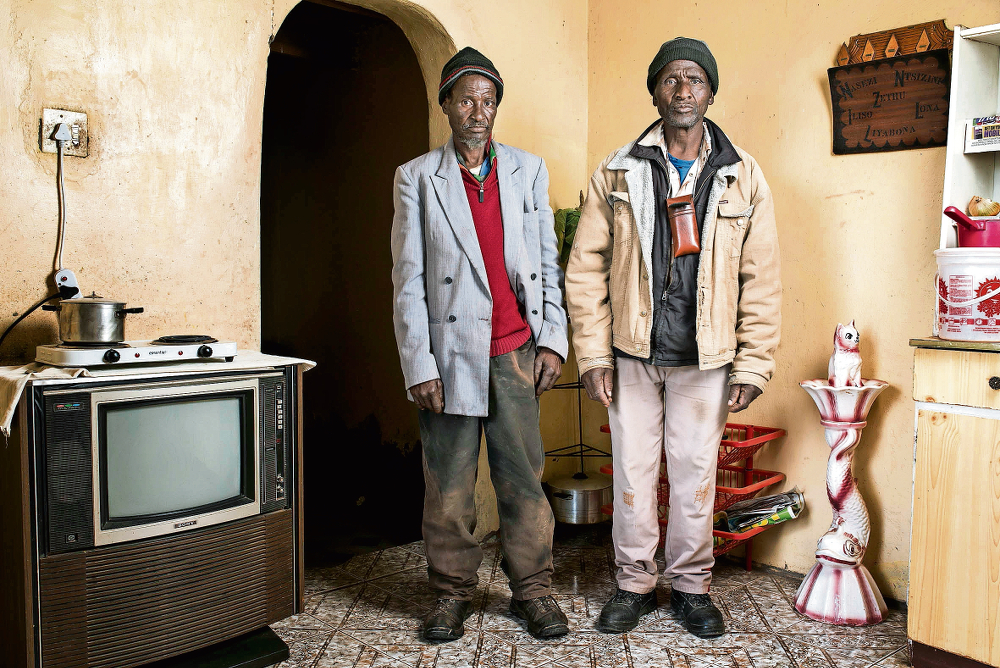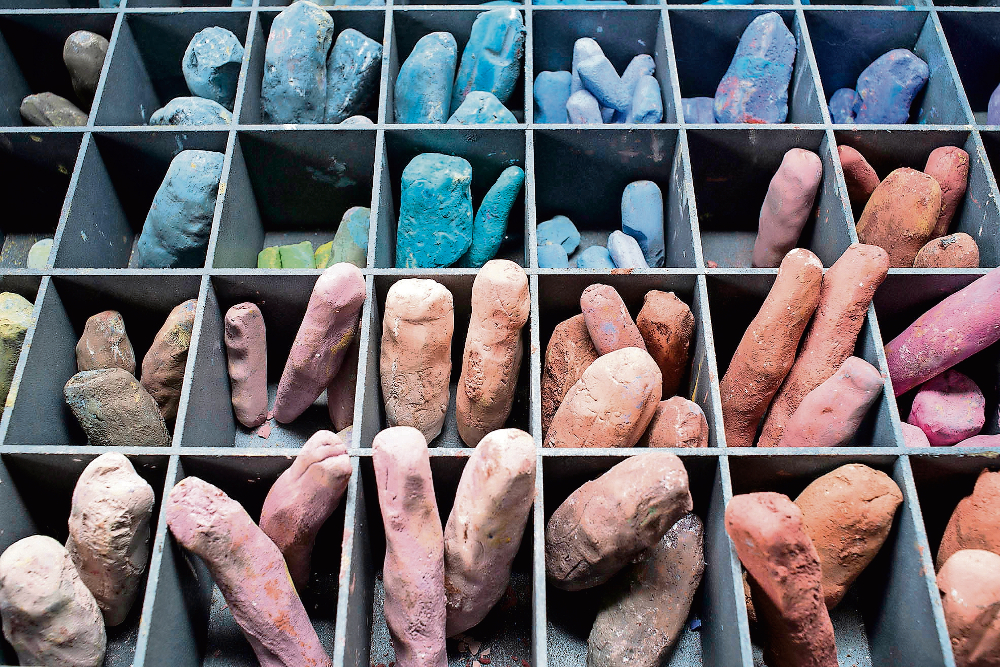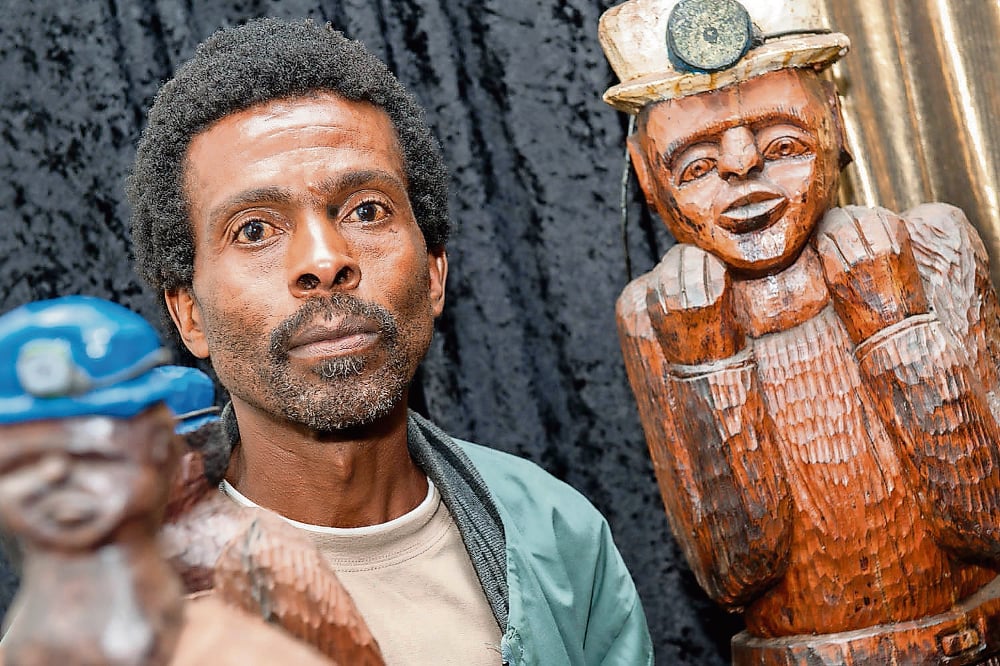Jeannette Unite
South Africa’s mining sector is in the spotlight again, with thousands of mineworkers suing 32 gold mining companies after contracting silicosis. And while news organisations are reporting on events in the industry, artists are letting their hands do the talking on the subject of mining and its repercussions on the men who dig out the precious stuff.
In a recent interactive multimedia exhibition titled The Price of Gold at the Central Methodist Church in Johannesburg, Cape Town-based photographer Thom Pierce gives faces and names to mineworkers who have experienced injustice.
Pierce, who was commissioned by the Treatment Action Campaign and Sonke Gender Justice, shot portraits of 56 applicants in the silicosis class action that seeks compensation from local gold mining companies.
The collection of portraits features individuals from the Eastern Cape, the Free State and Lesotho who have been diagnosed with silicosis and tuberculosis, as well as widows of miners who died from silicosis-related illnesses. As part of the installation, Pierce included a recording of a silicosis-afflicted mineworker wheezing. He shot the subjects at their homes and it took 20 days to complete the project.
Once he has received adequate funding, Pierce would like to move The Price of Gold to Cape Town.
“We wanted to create a compelling project to go with the court cases that are happening at the moment in the high court,” he said.

Dyamara Jibhana & his brother Phillip. (Thom Pierce)
Injustice is a subject that is close to Pierce’s heart, and his work often addresses human rights issues.
“For me [the issue is] very cut and dry in the sense of the right or wrong of it. These guys worked in the mines for 35 years; they worked very hard in their jobs and those jobs made them sick, too sick to be allowed to continue working.
“So this story is so consumable, so understandable and can be told in a visual way, and what we need to do is show other people the real people who are involved in this court case, because court cases are so dry.”
For him, the art that is currently being produced with mining at its core is a way to bring the issue to audiences who may not follow the court cases. “I have seen a lot of work that has been done on the mines by people like David Goldblatt, but I think we can also go at it from different angles and I’d like to think maybe this is a new angle on it.”
The mining artist
It’s been 129 years since gold was discovered on the Witwatersrand – a mineral that attracted foreign investors and helped shape the South African economy. But the wreckage – human and physical – that the once-booming industry has left behind cannot be ignored.
Capetonian visual artist Jeannette Unite has dedicated her career to unpacking and reflecting on the effects that mining has had on the landscape. Known as “the mining artist”, her focus for two decades has been on minerals and earth-related matters. She visits mining and industrial sites, where she collects mineral and metal oxides that she recycles and converts into art.
Love was her initial gateway into the underground world, she said. “I got engaged to someone who ran diamond mines and people thought I was very strange, being interested in such a male-dominated industry.
“Mining at the time was on the periphery of mainstream urban life when I started. But it seems a lot of people have hopped on to the bandwagon and mining is now much more central to the news.”
Her upcoming exhibition in Devon in the United Kingdom is titled Complicit Geographies and it zooms in on how land is measured, mapped and divided. It also features a collection of images relating to industrial landscapes. Her work will be on show from October 22 at the Innovation Centre at Exeter University’s Centre for Contemporary Art and the Natural World.

Jeannette Unite’s Pastals.
Guilty as charged
She includes the word “complicit” in her exhibition title because she believes she is complicit in the mining chain of production.
“I’m part of the market that drives the demand for the minerals. For instance, when you get into an aeroplane, you are immediately demanding oil. So I feel like I’m guilty as charged of the actions of the mining industry. I’m part of the problem.”
In 2012 she published the book Terra, which is part of a series that documents her artwork through her drawings of mining headgear, as well as glasswork produced from discarded glass, mineral dust and “diamondiferous sands”.
In Terra she reflects on the exploitation of the Earth and explains her methodology: “My glass processes mimic geological processes and layering to create the crusty, opaque vitrified land/forms which also mimic the geological formation of the earth, using the same materials and minerals.”
Art aficionados can expect the next book in the Terra series next year. At the moment, Unite is doing research on mines in Germany and England and observing how the material that’s found on sites ties in with world history.
Unite has never worked as a miner – her work is based on information she has gathered from experts in the field. In a way, her art deals solely with life after the storm.
A celebration of culture
Louis Chamane, on the other hand, is an artist and ex-miner who carves sculptures from wood – sculptures that depict the life of mineworkers on site and what it’s like to be caught directly in the eye of the storm.
Among his sculptures is one showing miners carrying the body of a dead colleague – an image so familiar in illegal mining operations that have gone wrong, and one that used to be common in the legal operations as well.
Chamane was 27 when he started working for a gold mine in Boksburg and in 1993 he began sculpting – a skill he had learned from his elders while growing up in KwaZulu-Natal. A year later, he was retrenched. The loss of a job became the drive he needed to create more art.

Louis Chamane.
Eleven of his sculptures form part of the collection Abasebenzi (The Workers), which can be seen at Constitution Hill in Jo’burg after the collection was donated to the heritage site by the Mineworkers Investment Company.
With his artworks, Chamane hopes to draw attention to the suffering experienced by miners and the conditions under which they work. “The situation underground is hard. At times we worked in extremely hot temperatures – so hot that you could even die from them,” he said.
He hopes his art will help educate people while celebrating his culture.
“People don’t know much about mining. Even up to today, black people know nothing about mining or the conditions underground because they were not allowed to visit the underground sites. But white people, even white women, could get access to them. The people that know the conditions best are those who have worked underground.”
Often the images we see of mining are shown through a lens situated on the sidelines. All we get is a glimpse into the underground world, and maybe that’s enough to get tongues wagging about the reality of mining – a reality we should be reminded of every time we look at our wedding bands or wristwatches.
But it is the country’s artists – and works such as Rehad Desai’s documentary Miners Shot Down, which recently received a 2015 International Emmy award nomination – that are most likely to keep the conversation going long after the court cases have ended.
For more images from the The Price of Gold project visit www.thompierce.com.